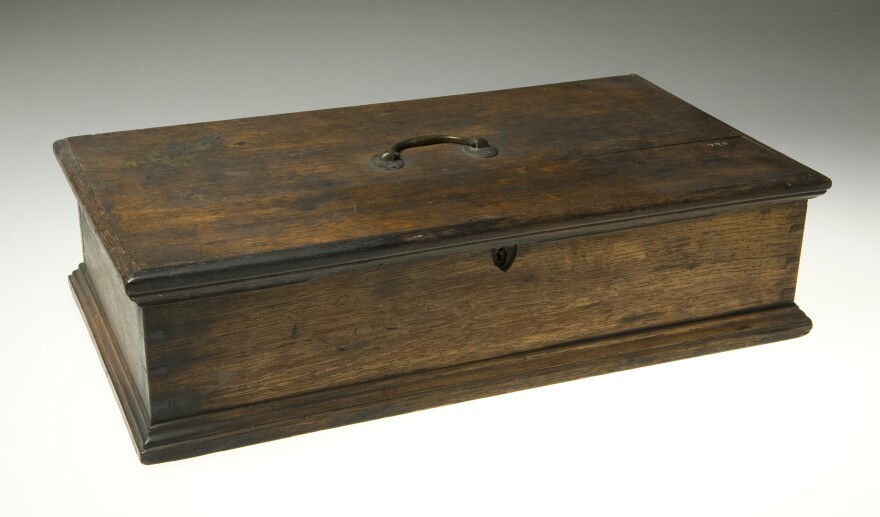Before the Civil War, Bernard Lynch owned the largest slave market in St. Louis. His operation included an office at 104 Locust Street, and a holding pen for slaves at 5th and Myrtle, present-day Broadway and Clark.
After the war, Lynch’s slave pen became a storage building for the Meyer Brothers Drug company, and in 1963, it was demolished to build Busch Stadium II.
Listener Anne Walker wrote to Curious Louis wondering whether any artifacts from the pen remain.

On Wednesday’s St. Louis on the Air, host Don Marsh spoke with Christopher Gordon, librarian at the Missouri History Museum, and Angela da Silva, professor of American Cultural Studies at Lindenwood University, to answer our listener’s question.
So are there any artifacts from the slave pen? The short answer, Gordon said, is no—when the building was demolished in 1963, there were no efforts to preserve it. Today, the pen only exists in old photographs. “The 1960s through the 1970s,” said Gordon, “people were not that interested in saving the old.”
“We were at the height of the Civil Rights Movement,” da Silva added. “[The city] was afraid to put this on display.”
The slave pen was well hidden even before it was demolished. It was located in a subbasement, so that the screaming, wailing, and corporal punishment would happen out of sight and hearing range of the people who lived nearby.
How was the slave pen used?

It would have held enslaved people about to be sold at auction. It would also have served as a jail cell for free people of color who violated the curfews imposed by local black codes. “If I, even as a free black, could not get off the street, I would have to sign myself in to Bernard M. Lynch’s slave pen to escape the 39 lashes for a curfew violation,” da Silva said.
Slave auctions happened at least once a week, and were held outside of the Old Courthouse. Prices for enslaved people varied by age and gender, but Gordon said they would have cost between $750 and $1800, “a considerable sum of money at that time.”
Reenacting a slave auction
As part of a 2011 commemoration of the Civil War, da Silva helped organize a reenactment of a slave auction, and played the part of a slave herself. “We started at Lynch’s slave pen, rattling [our] chains, walking up to the courthouse,” she said. “We all agreed we would never do it again. It just drained you.”
In 1861, Union troops entered St. Louis and seized the city’s slave markets, and Lynch’s slave pen was used to hold Confederate sympathizers.
“There is a modicum of justice on this particular site,” said da Silva. “Bernard M. Lynch’s slave pen turned into a prison for the same people who went there shopping.”
At one point, Lynch himself was imprisoned in his own jail cell.

After his release, Lynch fled St. Louis and wasn’t heard from again. He left everything in his office, including his cashbox, which his clerk saved. The cashbox is now in the Missouri History Museum collection—the only physical object from Lynch’s business that survives.
Lynch’s cashbox was displayed as part of the museum’s Civil War in Missouri exhibit in 2011. It is not currently on display.
_
St. Louis on the Air brings you the stories of St. Louis and the people who live, work and create in our region. St. Louis on the Air host Don Marsh and producers Mary Edwards and Alex Heuer give you the information you need to make informed decisions and stay in touch with our diverse and vibrant St. Louis region.



